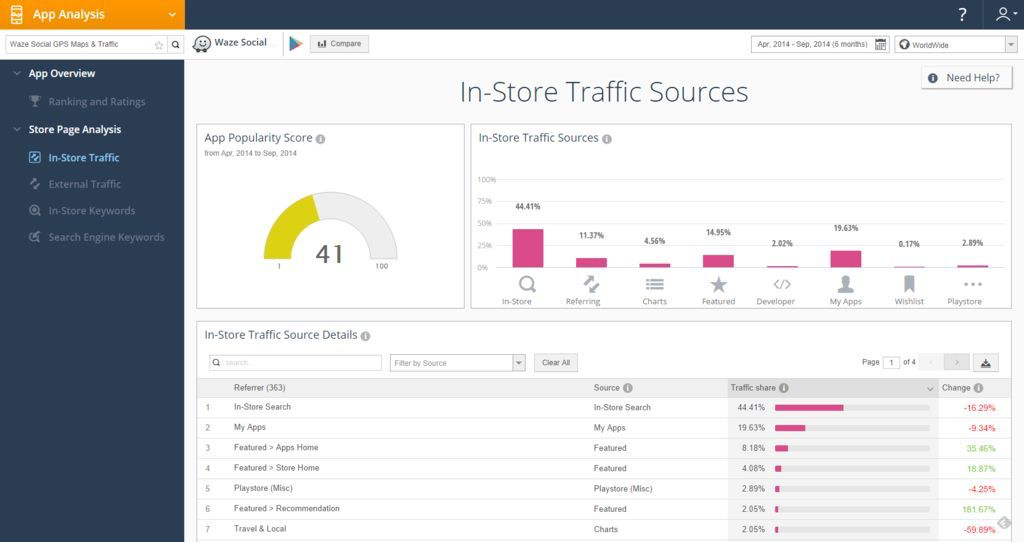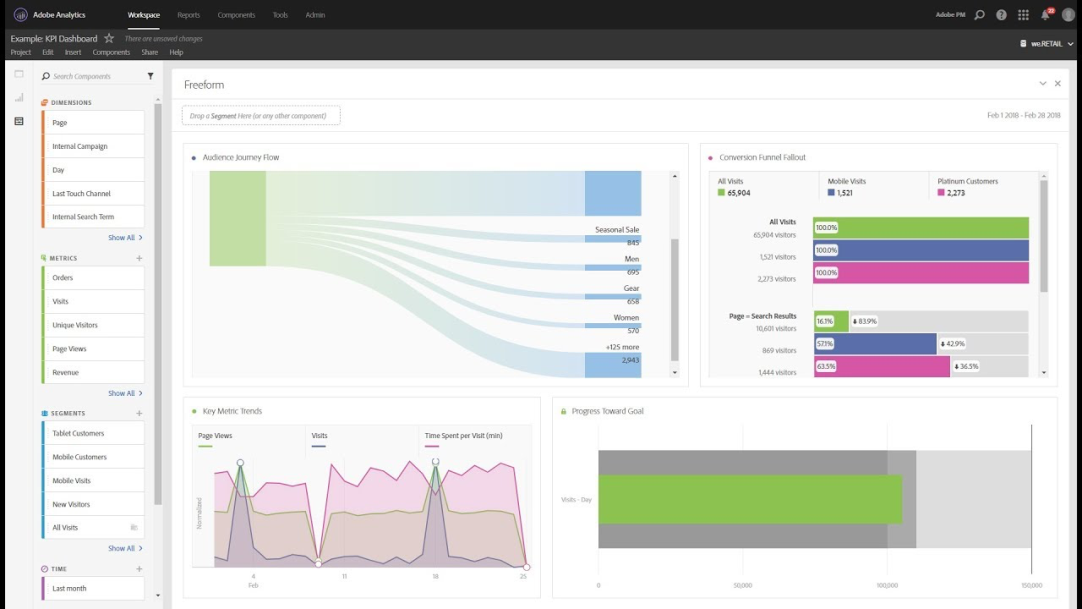Web analytics tools: the best solutions
Web analytics tools: the best solutions
So, you've launched your website. That's great! What's next?
How do you know if your website is really working? How to evaluate the effectiveness of the existing sales funnel? How to find vectors for further development to constantly improve performance? All these and many other questions are answered by comprehensive web analytics.
Now you will learn what web analytics is, why a modern website and business in general need web analytics. Enjoy reading!
What is web analytics?
Web analytics is a comprehensive system for collecting, analysing, and correctly interpreting data about website visitors, which is necessary for continuous improvement and optimisation of the resource.
In simple terms, classical analytics allows you to understand how users interact with your website. Based on this information, you can systematically improve the principles of interaction. For example, you can change the structure, rework the content on the page, improve usability, etc.
If used correctly, web analytics services can help you solve several important tasks at once:
- Increase revenue per visitor by increasing conversion and average check.
- Identification of bottlenecks in the sales funnel. Finding ways to improve their efficiency.
- Search for the most favourable points for placing goods and services on the virtual shelves of the website.
- Improving personalised recommendations in newsletters and resource pages.
- Collect data on user behaviour on the website: the depth and time of browsing, page transitions, etc.
And this is only a small part of the tasks that correct web analytics helps to solve.
The main features of web analytics
A comprehensive web analytics system, if used correctly, provides website owners with large amounts of important information:
- How many users visit the website per day, week, month or year.
- How long users spend on average on the site.
- How deeply visitors browse the pages, how actively they follow internal links.
- Where do users come to the site from - search, other web resources, social networks, messengers, etc.
- Who is your target audience (their gender, age, geography, social status, and even interests).
- How users interact with the website. For example, leave comments on a blog, share feedback about products or services, take surveys, etc.
- Whether the ultimate goal of visiting the site is achieved (making a purchase, going to a specific page, filling out a form, etc.)
In addition, web analytics systems help to evaluate not only website statistics, but also the most important indicators of its performance: page loading speed, correct display in different browsers and on different devices (including those with different screen diagonals and aspect ratios).
In other words, web analytics answers questions about how a website works and how the target audience interacts with it. The results of analytical research directly depend on the type of research and the tools you use.
Types of web analytics
Globally, web analytics is divided into two broad categories: standard and end-to-end analytics.
Standard analytics focuses exclusively on the website - its technical condition, number of visitors, user actions, etc.
End-to-end analytics provides comprehensive data. It helps to track the entire user journey - from clicking on an ad to performing a targeted action.
For standard web analytics, well-known analytical systems are quite suitable, while for end-to-end analytics, more highly specialised ones are needed. We will tell you more about them below.
Basic website analytics systems

Google Analytics is a popular web analytics service that allows you to view traffic sources, audience, conversion, website traffic, and much more. For convenience, you can set up email reports and notifications about changes in selected parameters. This service was launched in the autumn of 2020. Before that, another service was used by default - Universal Analytics.
Open Web Analytics
A free open source web analytics service from independent developers. In your OWA account, you can view comprehensive data on website views, visitor locations, and visits to your website from other platforms. In addition, the service can draw a click map and track user activity in corporate accounts and social networks.
StatCounter

A free web analytics tool with a basic set of functions. Collects data about visitors and tracks their behaviour. It is able to analyse each page of the website separately. An important advantage of StatCounter is the ability to collect statistics on browsers, search engines, operating systems, and devices used by users. All this helps to create a more accurate portrait of the target audience.
Reactflow
Another web analytics service that, compared to its analogues, provides a useful function - tracking and visualisation of the customer's path from the moment of entering the site to the target action (or leaving). Reactflow's features include heatmaps, sales funnel analytics, event log, and error tracking. There is a conditionally free tariff for individual use. To work with all the functions, you will have to pay for full access.
Additional web analytics services and tools
SimilarWeb
One of the most popular web analysis services that allows you to comprehensively study user traffic by topic and region. SimilarWeb has a number of useful tools for analysing competitors, and it analyses both desktop and mobile versions of websites. The service has a free trial period.

OWOX BI
An advanced web analytics platform that automatically collects marketing data, generates reports, and helps you optimise your budget. A free plan is available to work with Google Analytics only. All the functionality is revealed in a paid plan - from $42 per month.
Clicky
A relatively simple service that displays website traffic in real time, as well as shows a click map and session duration. Basic functionality for analysing one website is available for free. The cost of a PRO account starts from $9.99 per month.
Adobe Analytics
Not the most popular, but quite useful service from Adobe that allows you to divide website visitors into categories, build user flow maps, track suspicious traffic, etc. Perhaps the main function is the analysis of the return on investment.

Mixpanel
It is a user-friendly service with advanced analytics and a fairly functional free plan. Mixpanel is able not only to track user behavioural factors but also to give comprehensive recommendations on how to improve performance. However, the full functionality of the service is revealed only in the PRO account, which costs from $25 per month.
Sisense
A flexible platform with web analytics tools and a free trial. An important feature of Sisense is its individual pricing. The cost of integrating Sisense tools is calculated individually for each client.
Conclusions
Web analytics is one of the most important steps towards improving your marketing strategy and increasing its effectiveness. As you can see, there are dozens of different web analytics tools on the market.
Today, comprehensive analytics is one of the must-have attributes for online promotion, sales growth, and audience loyalty. We have already told you how to drive traffic to your website. But you should keep in mind that this traffic needs to be analysed correctly in order to use this data to increase conversions.
FAQ
What is web analytics and why is it needed?
Web analytics is a system of collecting and analysing data about a website and its users, designed to optimise and improve a web resource.
What are the types of web analytics?
There are two types of web analytics: standard and end-to-end. Standard analytics is based primarily on website data, while end-to-end analytics provides more specific information about the actions of visitors on the site.
How to choose a web analytics tool?
When choosing web analytics tools, you should focus primarily on your own goals and analysis needs, as well as on the desired level of data detail. If you only need basic information without any frills, you can stick with Google Analytics. If you need more specific data, consider third-party solutions, including paid ones.
